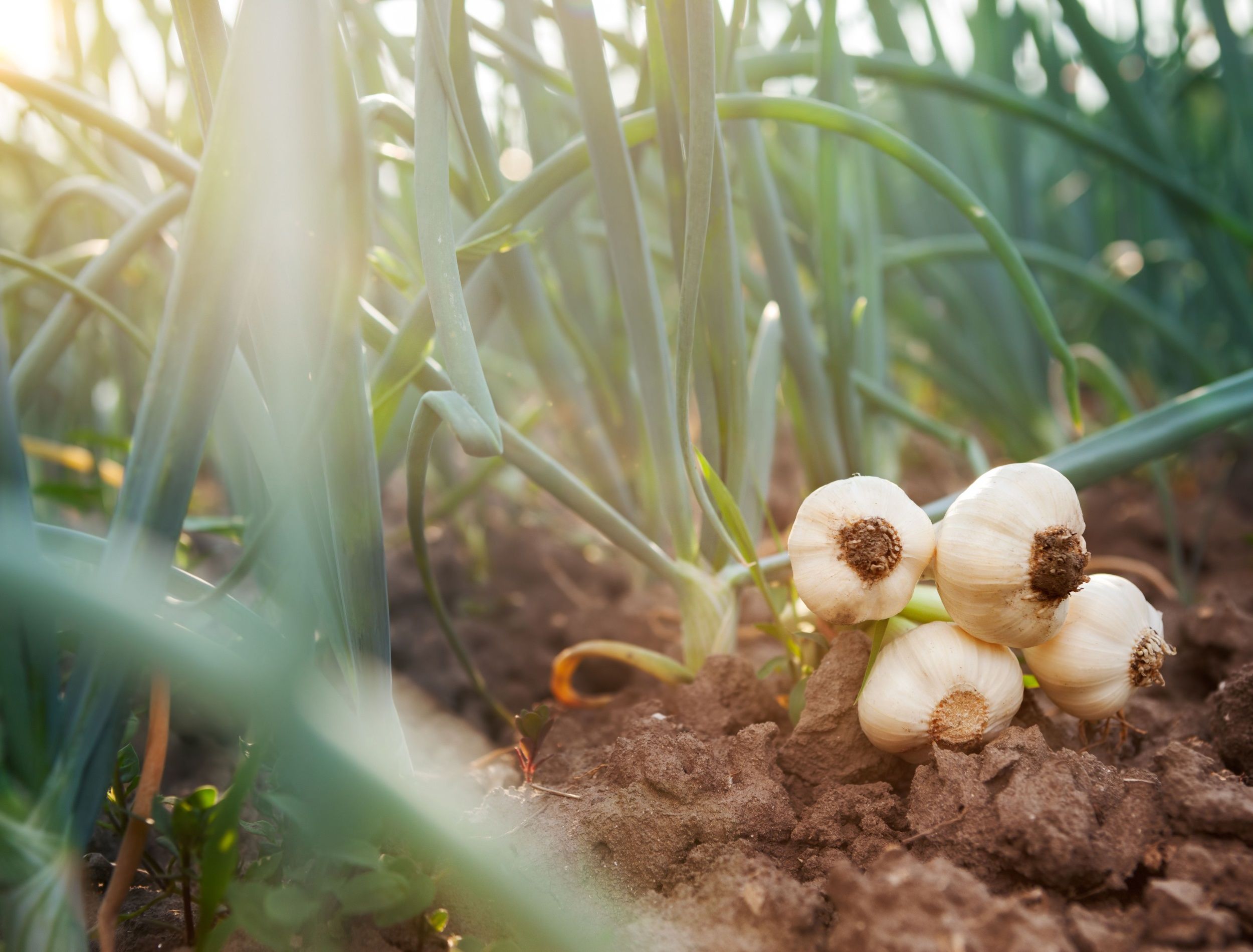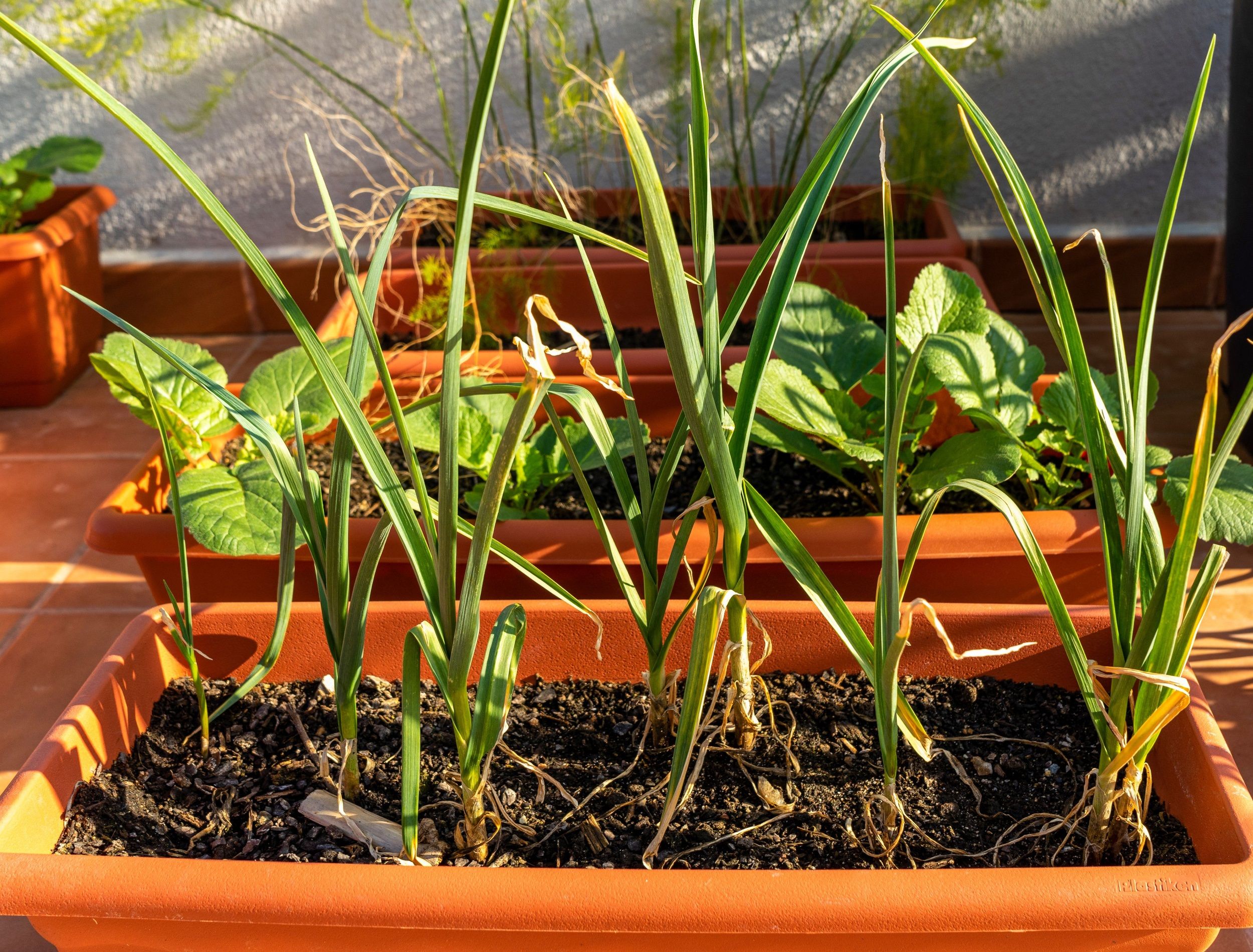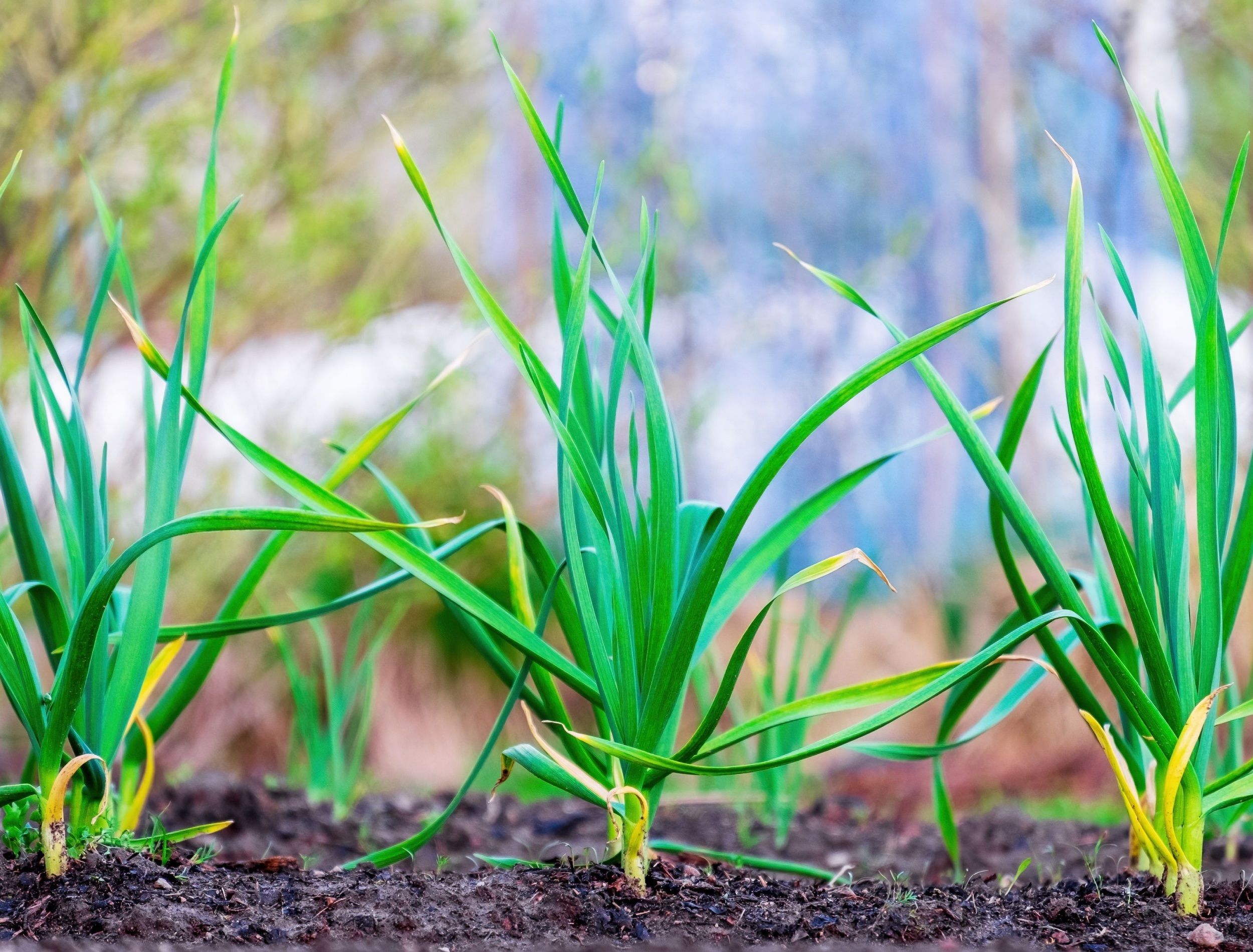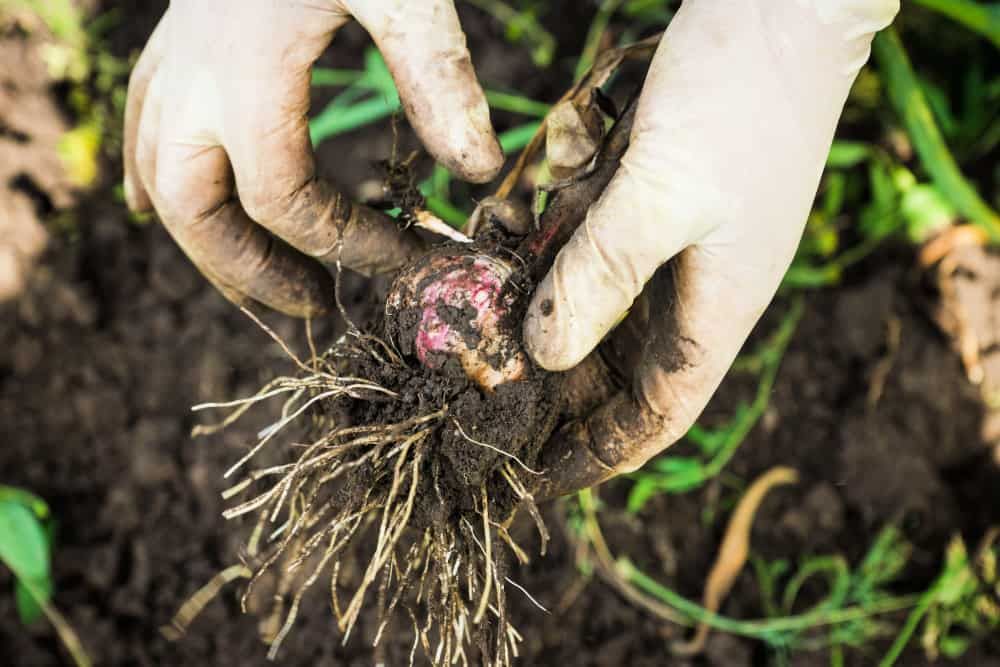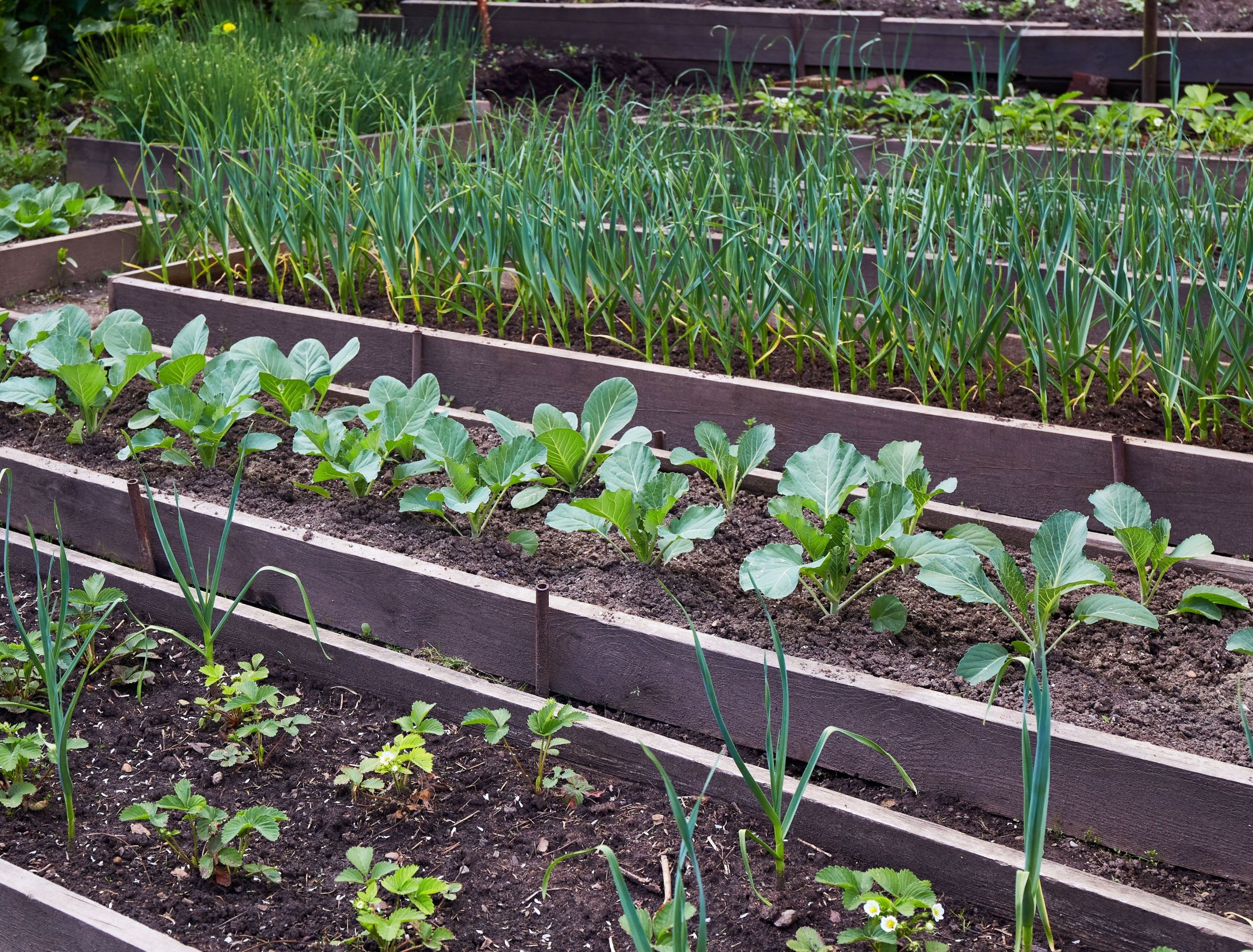Garlic is a versatile and flavorful ingredient used for centuries in cooking and medicine. Its distinct taste and aroma have made it a staple in many cuisines. Plus, its health benefits have been praised for just as long. But garlic isn't just useful in the kitchen, it's also an excellent addition to your vegetable garden.
If you want to take your gardening skills to the next level, learn why you should grow garlic with your vegetables. Plus, find tips and guidelines for growing garlic, and discover the best vegetables to grow it with.
Garlic's Benefits for Vegetable Gardening
Garlic can provide numerous benefits, making it an excellent addition to many gardens. Explore some of the key benefits of growing garlic with your vegetables below:
Improves Soil Health
Image credits: supersaiyan3 via Shutterstock
Garlic can enhance soil health by adding organic matter and nutrients, including nitrogen, phosphorus, and potassium. When garlic is grown in the soil, it naturally releases these nutrients as it grows. However, it does not mean you must let the garlic you grow decompose. When garlic plants grow and mature, they naturally release nutrients into the soil around them.
Additionally, garlic contains sulfur, which has antifungal properties. It helps suppress the growth of several harmful soil-borne fungal diseases that can infect plants, such as pythium, fusarium, rhizoctonia, and phytophthora.
Natural Pest Control
Image credits: S.O.E. via Shutterstock
Garlic also acts as a natural pest control for vegetable plants. When you plant it alongside other veggies, its strong scent can repel pests such as aphids, onion flies, or ermine moths.
You can also use it to make a natural pesticide spray effective against many pests, such as bugs. To create a garlic spray that bugs will hate, blend two bulbs of garlic and two hot peppers (or a tablespoon of Tabasco sauce) with ½ cup of water.
Once blended, strain out the solids to create a concentrated mixture. Next, add ¼ of the concentrate to one gallon of water and mix. Then, spray the mixture directly onto any bugs to repel them.
Companion Planting
Image credits: andres barrionuevo lopez via Shutterstock
Garlic, as a companion plant, can enhance the growth of other vegetables. When planted alongside plants such as tomatoes, cabbage, and lettuce, it can help improve its flavor and yield. Garlic does it by releasing sulfur compounds into the soil that help boost nutrient uptake and enhance plant growth.
Garlic is a natural pest repellent and deters a variety of pests that can damage these companion plants. Some common ones that garlic can repel include aphids, spider mites, and whiteflies. It releases a strong odor that repels them and makes the plants less attractive to them.
However, there are also a few plants that you should not plant with garlic. These include sage, beans, or peas. When grown together, these plants can compete for nutrients and water, stunting each other growth.
How to Grow Garlic With Vegetables
Now that you know the benefits of growing garlic with your vegetables, it's time to learn how to incorporate it into your gardening routine. Here are some tips and guidelines for growing it alongside other vegetables:
Choosing the Right Varieties
Image credits: tilzit via Canva
When growing garlic with your vegetables, choosing the proper variety is key to achieving success.
The variety of garlic can have a difference in its effectiveness as a companion plant with different vegetables because each type has its unique flavor, scent, and chemical composition. For example, hardneck garlic has a stronger flavor and scent, which can be more effective in repelling pests.
Some popular types that work well in vegetable gardens include:
- Hardneck Garlic: These varieties produce a stiff central stalk, or scape, that can be harvested and used in cooking. They're known for their robust flavor and are ideal for colder growing regions. Popular types include 'Chesnok Red,' ‘Early Italian,' and 'German Red.'
- Softneck Garlic: Soft neck garlic varieties, as the name suggests, have a soft stem and are easier to braid for storage. You can recognize them by their mild, sweet flavor. They are ideal for warmer growing regions. Popular varieties are 'Inchelium Red,' ‘California White Early,’ and 'Silverskin.'
Planting
Image credits: Aleksandar Tasevski via Canva
Plant garlic in the fall, ideally six to eight weeks before the ground freezes. Choose a well-draining location in your garden that receives full sun. Break the garlic bulbs into individual cloves, leaving the papery skins intact. Plant the cloves about 2 inches deep and 4 to 8 inches apart, with the pointed end facing up.
Remember when planting garlic with your vegetables do your research and ensure the plants have similar growing requirements.
Caring
Image credits: Denis Shitikoff via Shutterstock
Garlic is a relatively low-maintenance crop but requires some care to ensure healthy growth. Water regularly, especially during dry spells, and mulch around the plants to help retain moisture and suppress weed growth.
Harvesting
Image credits: Andrew Pustiakin via Shutterstock
Garlic is ready to harvest when the leaves begin to yellow and dry out, usually in mid to late summer. Carefully dig up the bulbs and allow them to dry in a cool, dry place for several weeks before storing them.
Growing With Other Veggies
Image credits: Viktorya Telminova via Shutterstock
The process of growing garlic alone and with other vegetables is almost the same. There are just a few adjustments you may need to make:
- Choose compatible vegetables: When growing garlic with other vegetables, select companion plants that will grow well together.
- Plan your planting layout: You can grow garlic in rows or blocks alongside other plants or implement it among other crops.
- Adjust planting depth: Garlic should be planted about 2 inches deep, and the planting time may need to be adjusted based on the specific vegetables you're growing.
- Timing: If you're growing cool-season crops, you may be able to plant garlic in the fall. However, if you're cultivating warm-season crops, you may need to plant garlic in the spring.
- Use companion planting techniques: Garlic can be a valuable companion plant, helping to repel pests and improve soil health. Consider planting it in locations that are mainly exposed to pest attacks.
Maximize Your Garden with Garlic
Growing garlic alongside your favorite veggies is a great way to boost your vegetable patch. It improves soil health, acts as a natural pest control, and enhances the flavor of your favorite greens.
By choosing the right garlic varieties, planting them in the ideal growing conditions, and pairing them with popular vegetables, you can enjoy a bountiful and delicious harvest. Whether you're a seasoned gardener or a beginner, growing garlic is fun and will reward you with fresh produce all season.
Do you know other reasons to grow garlic? Share them below!

